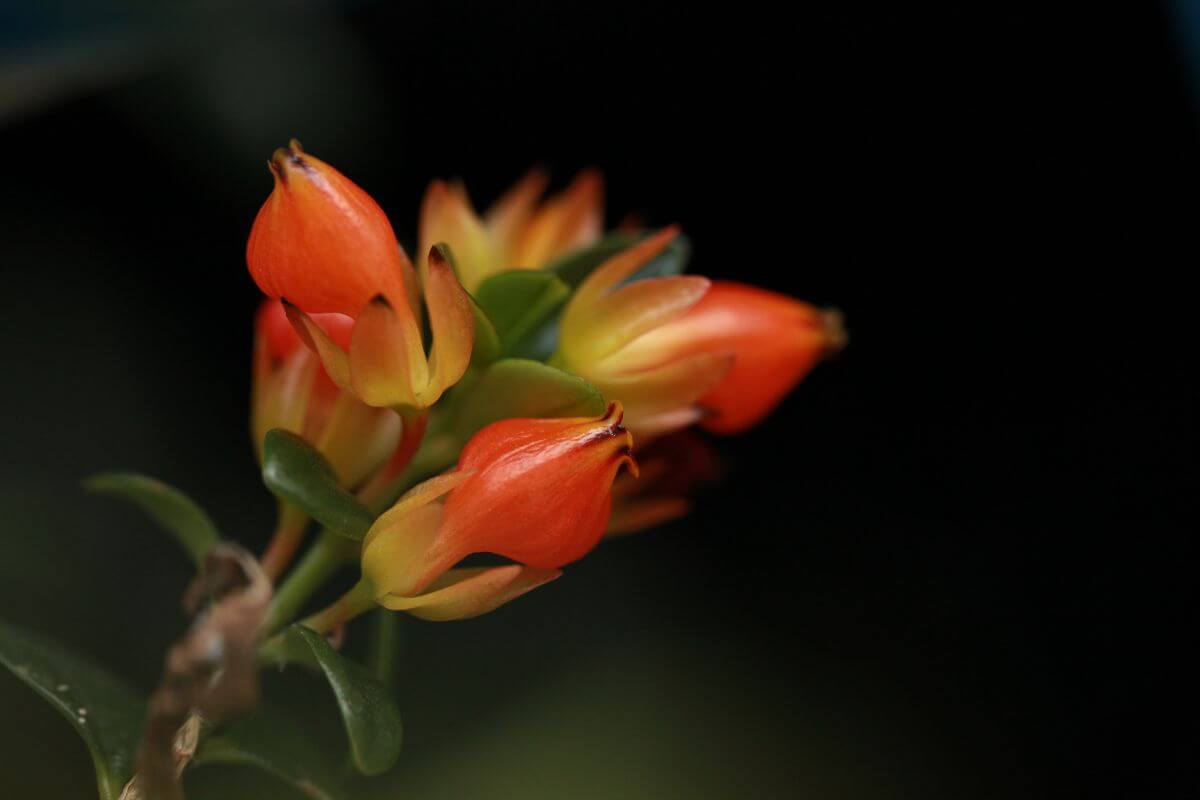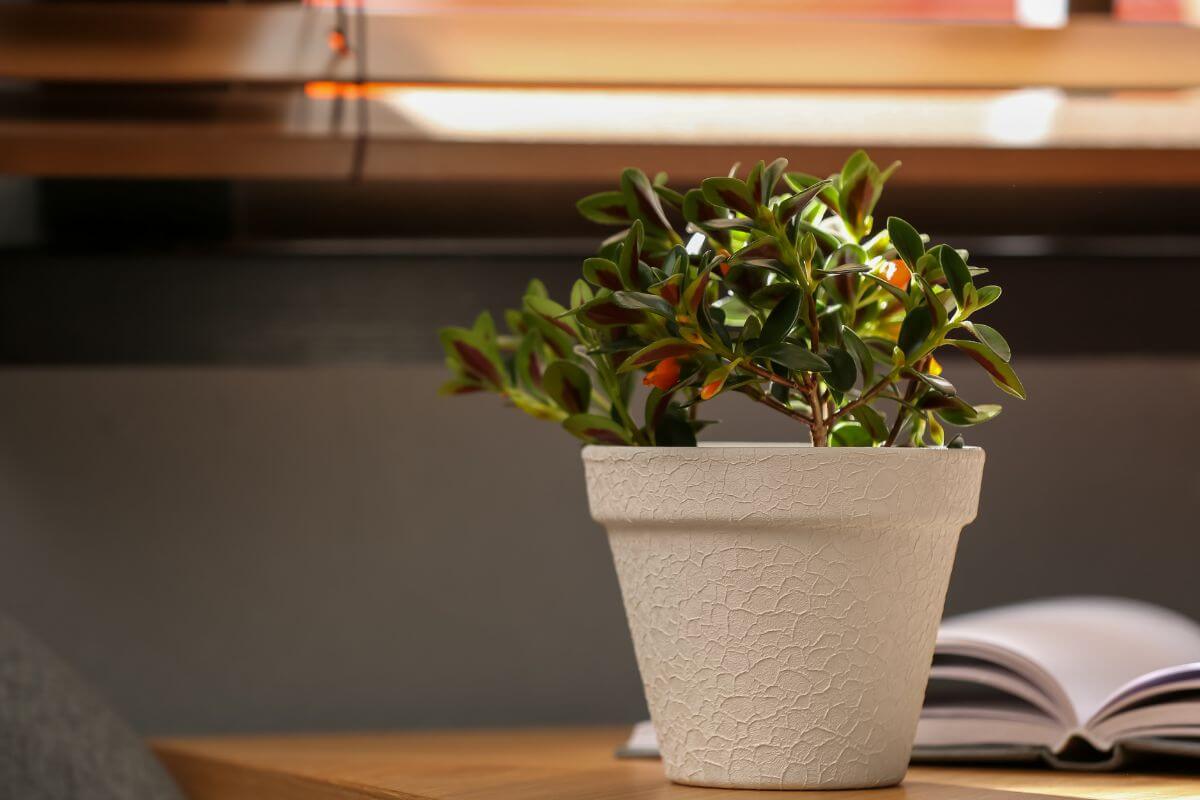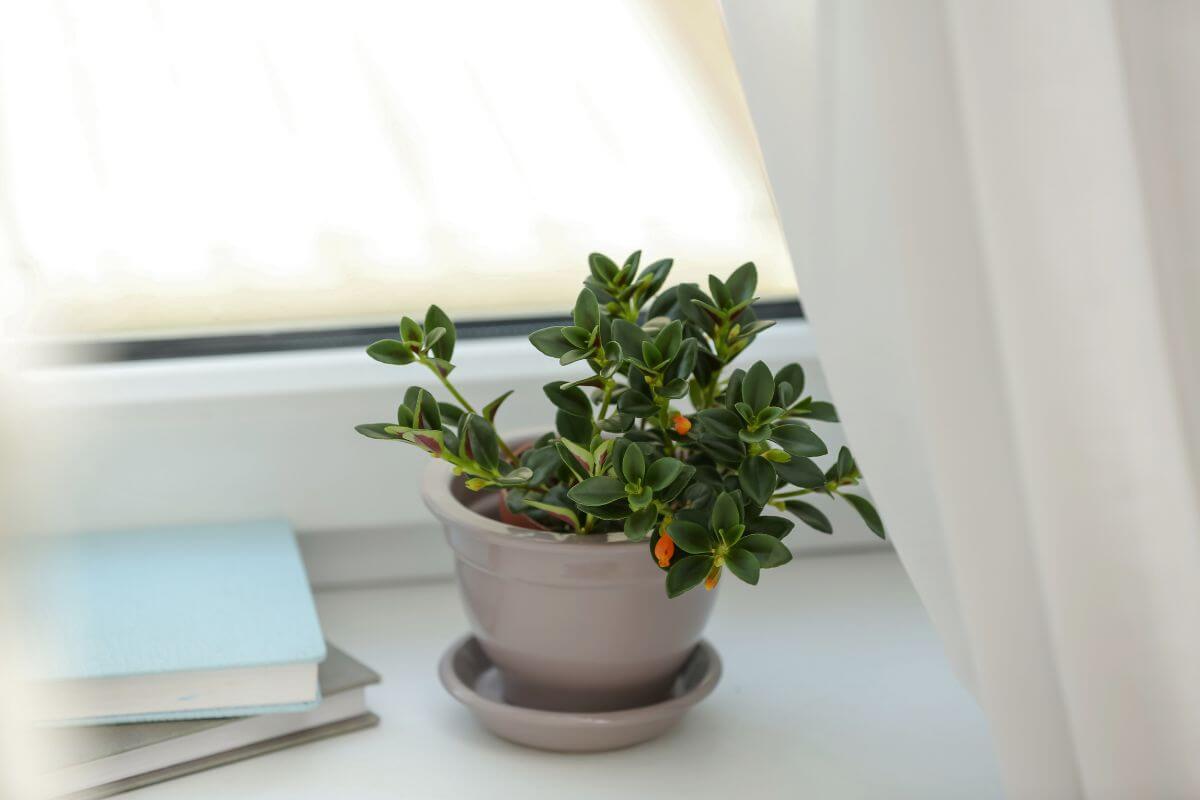If you’re looking for a way to add some color to your home without having to spend a lot of money, then goldfish plants might be the perfect solution.
The Columnea nemantanthus, popularly called the Goldfish Plant, has long trailing vines with smallish leaves. It produces vivid tubular flowers in red, orange, or yellow that resemble goldfish during the spring and summer.
These plants love to flower and are a beautiful addition to any room, particularly when cultivated in hanging flower baskets.
They’re often grown as houseplants because they’re easy to care for and require minimal maintenance. They’re also inexpensive and easy to find.
Learn how to care for the goldfish plant to ensure that it grows into a beautiful and healthy houseplant.
Goldfish Plant Overview

Native to the American tropics in Eastern Mexico, the Caribbean and Central America, this plant is named for the 16th century botanist, author, and explorer Fabio Colonna.
This trailing beauty is an epiphyte and member of the Gesnericeae family, as are the Episcia and the African Violet. There are well over 100 species of the Columnea.
Epiphytes grow on trees or other plants, but they are not parasites. They do not steal nutrients from their host, but take moisture and nutrition from the air. They only use the host plant as a base.
Since this plant will usually attach itself to trees, it is a vigorous trailer and this is precisely why it does so well in a hanging planter. The vines can grow to 40 inches in length.
Thanks to breeders, the goldfish plant now boasts more than 25 plant varieties. Among these, we find well-known varieties that feature lush foliage and beautiful blooms with original names like:
- Aladdin’s Lamp
- Bartley Schwarz
- California Gold
- Chanticleer
- Firebird features
- Frosty Hills – variegated leaves
- Mirage
- Orange Sherbert
- Volcano
The goldfish plant will only ask for good light, a comfortable environmental temperature, and lots of humidity.
These plants do well in environments that are relatively mild, making for great indoor plants. Let’s dive deeper into how to care for goldfish houseplants.
Goldfish Plant Care Guide
Soil for the Goldfish Plant
In its natural habitat, this plant is an epiphyte and will grow upon other plants or trees. Therefore, standard potting soil is not a good choice as a growing medium.
An epiphytic medium would need a combination of vermiculite, peat moss, and perlite, so that good draining is guaranteed. Some will suggest using African Violet soil mix, which is fine, but add in some perlite to make it more porous.
African Violet soil mix can be found easily online.
Light for the Goldfish Plant

While the goldfish plant loves bright light, it should not sit up against window glass. Bright indirect light is the best. Direct sunlight can scorch foliage in the summer and leaves could freeze as it’s too cold in the winter.
A south-facing window is an ideal location for winter. During the growing season, a west-facing window will be better. This plant does take up space, so consider this when choosing where to position it.
Temperature for the Goldfish Plant
As a tropical plant, the goldfish plant is sensitive to very high temperatures because it grows underneath the canopies of trees in its natural habitat, where temperatures are not high.
These type of plants thrive in temperatures of 65° to 75° Fahrenheit.
Drafts should also be avoided, so place it away from hallways, drafty windows, doors, and air conditioning units or heating vents.
Water and Humidity for the Goldfish Plant
Because these plants are epiphytes, they usually procure their moisture from the surrounding air. This is the main reason why humidity is important to their well-being. Moderate to high humidity is preferred.
If you have a sunny bathroom, this might be a perfect location because it gets indirect light and humidity together.
The soil bed should always be a bit moist. Filtered water or rainwater is best when watering. The soil bed should never be allowed to dry out completely.
You can mist your goldfish plant daily with room temperature water. Cold water misting may harm the green leaves and colorful flowers.
If you don’t have adequate humidity levels, you can add a humidifier or small receptacle of water near the plant can help. You can also make a humidity tray of pebbles and place it underneath your plant.
Fill a tray with pretty pebbles or stones and water. Place it underneath the plant’s container. The pot must not touch the water in the tray. As the water evaporates, it will humidify the air surrounding the plant.
Fertilizer for the Goldfish Plant
A weak water-soluble liquid fertilizer, such as 15-30-15 can be used to feed your plant. To respect the nature of the plant, add it to your misting water or to the pebble tray so that the nutrition is added to the air through humidity.
For dilution, you can use approximately 25 to 30% of what the fertilizer instructions recommend to start out with. See how it grows and allow increase the fertilization if needed.
Pruning and Repotting the Goldfish Plant

Rather than pruning the goldfish plant, pinching can achieve a bushier appearance. Pinch off the growing stem tips to encourage growth and branching.
Repotting should be done at the beginning of spring. When you repot, prune dead blooms and shape your plant.
When repotting, remember the correct growing medium. Don’t use basic potting soil. Repotting should be done in a container that is one size larger.
The goldfish plant enjoys being a little root-bound, so you may not need to repot your plant annually, but every couple of years. Also, gently prune the root ball at this time to encourage new growth.
Propagating the Goldfish Plant
To propagate the goldfish plant, take stem cuttings. It is best to cut plant tips that do not have any bloom buds.
- Use stem tip cuttings that are approximately four to six inches long.
- Treat the cut end with root hormones to increase your chances of successful rooting.
- Place three to eight new cuttings in a container with one-half perlite and one half peat moss as a growing medium.
- Water lightly
- Cover the pot with a plastic cover or bag
- Place the container with the cuttings in a warm environment with bright indirect sunlight.
- Leave your cuttings until new growth emerges.
Goldfish Plant Common Plant Pests, Diseases, and Problems

Common goldfish plant problems include common houseplant pests such as aphids, whiteflies, and spider mites. Pest infestations should be treated with neem oil or an insecticidal soap.
Common infections afflicting the goldfish plant are the mosaic virus, fungal leaf spot, and botrytis mold.
Common problem signs are dropping leaves, lack of flowering, browning leaves, and leggy growth.
Leaf drops are caused by air that is too dry or by cold drafts. Also, poor flowering can be due to a lack of humidity or temperatures that are too cool.
Browning leaves can be caused by several factors: an incorrect growing medium, the water, or by a fertilizer heavy on calcium.
Straggly vines probably need pruning. Pinch them back on a regular schedule. Stem rot will be due to overwatering. Take fresh cuttings and restart your plant.
Goldfish Plant Toxicity and Pets
The goldfish plant is non-toxic to both cats and dogs, so there are no concerns with poisoning if you have pets.
Goldfish Plant Care Final Thoughts
Grow it as an adorable houseplant or as an outdoor garden beauty. This is a lovely, colorful vivid plant that will brighten up any location with bright blooms all year round when well cared for.
For other beautiful houseplants, check out these care and grow guides:
- Crown of Thorns Houseplant Care Guide
- Bamboo Palm Houseplant Care Guide
- Lipstick Plant Care Guide
- Nerve Plant Care Guide
- Pilea Plant Care Guide
Goldfish Plant Care FAQs
Is goldfish plant indoor or outdoor?
The goldfish plant can grow indoors and outdoors. These are epiphytes, so they will also grow on other plants and trees. When growing indoors, use growing medium like African Violet potting mix.
How much sun does a goldfish plant need?
The goldfish plant prefers bright indirect light for up to 12 hours per day. To prevent scorching, avoid direct sunlight. Adding artificial lights for additional lighting is a good option to provide enough light for the goldfish plant.
Are goldfish plants easy to care for?
Yes, goldfish plants are easy to grow. They only need basic maintenance. You just need to keep it watered regularly and fertilize it once a month. If you want more information about how to maintain your goldfish plant, read our article here.
What kind of soil should I use for my goldfish plant?
African Violet potting mix works great for most houseplants. If you want to make your own potting mix, use a mix of vermiculite, peat moss, and perlite, so that it’ll be well-draining.
Should I trim my goldfish plant?
Yes, you should trim your goldfish plant for a bushier look. Trimming helps make it easier to manage. You can trim every two weeks during spring and summer months. Use sharp scissors to remove dead foliage from the top of the plant. Make sure not to damage the roots while removing old stems.
How do I get my goldfish plant to flower?
Proper care for your goldfish plant will encourage it to flower. Water it frequently but don’t overdo it. Keep the temperature around 70 degrees Fahrenheit. Plant it in a well-draining potting mix, like what you would plant African Violets in.
Is the goldfish plant toxic to cats and dogs?
No, the goldfish plant is non-toxic to cats and dogs. There’s no need to worry about your pets chewing and ingesting the plants.


